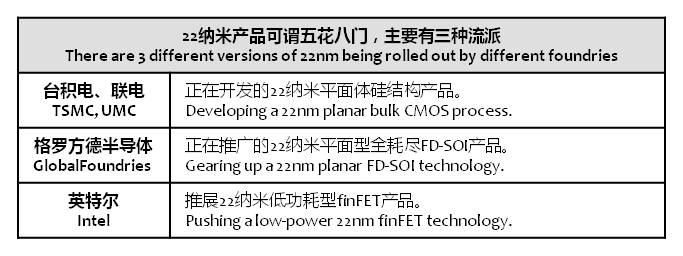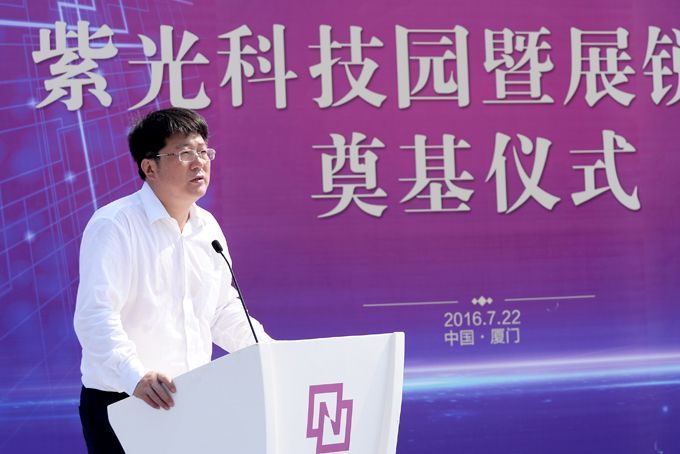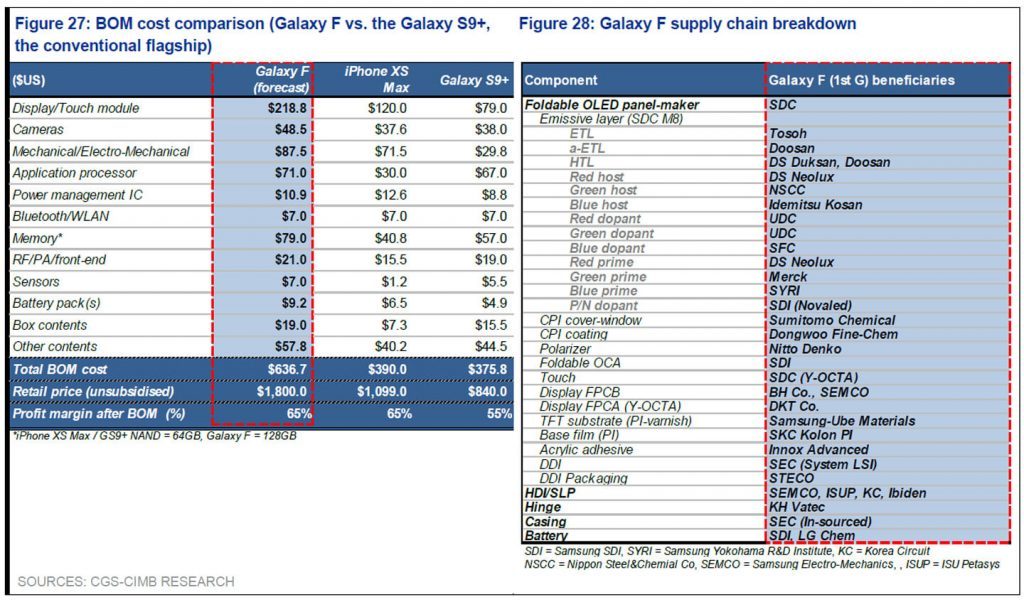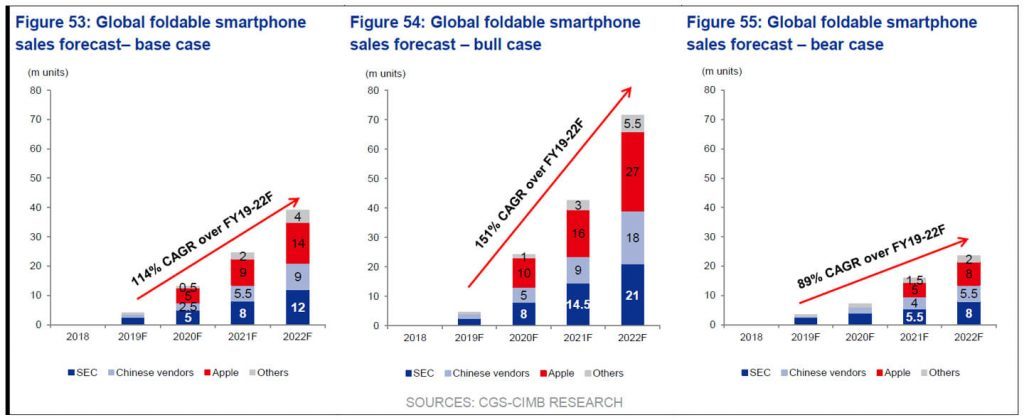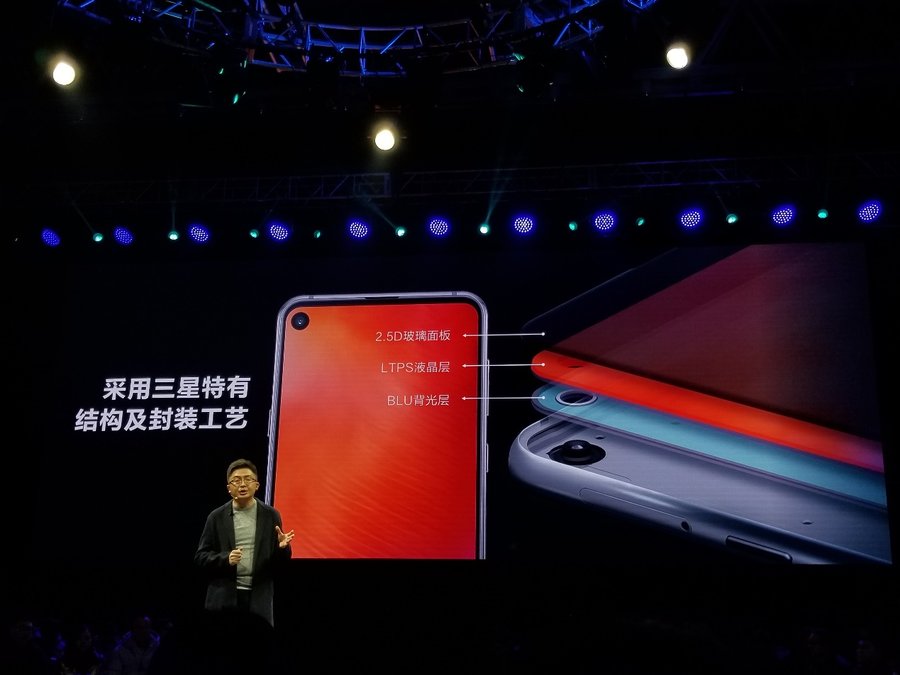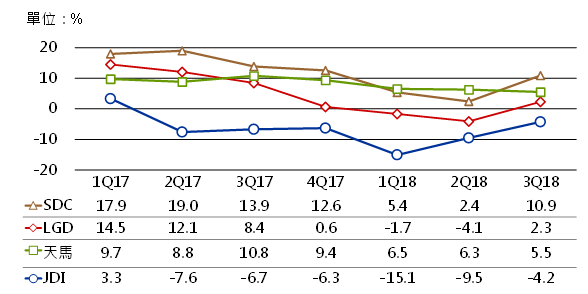
12-15: Samsung Galaxy Fold will reportedly cost USD1,800 without carrier subsidies; Chunghua Picture Tubes (CPT) has filed a petition for restructuring and emergence disposition of its property; etc.
Chipsets
After introducing new 22nm processes, foundries are gearing up the technology for production—and preparing for a showdown. GlobalFoundries, Intel, TSMC and UMC are developing and/or expanding their efforts at 22nm amid signs this node could generate substantial business for applications like automotive, IoT and wireless. Yet foundry customers face some tough choices because not all 22nm processes are alike. In addition, not all of them have a full complement of EDA tools or IP. (Semiconductor Engineering, article, CN Beta)
Nvidia has made its PhysX GPU-accelerated physics simulation engine open source. The engine essentially allows for simulating real-world physical behavior in objects in 3D simulations. For example, it allows for more realistic depictions of damage to buildings in games, as well as natural movements for characters and things like paper and cloth. (CN Beta, Techspot, Forbes, Extreme Tech, TNW, Nvidia)
Tsinghua Unigroup has set ambitious goals of scoring USD100B in annual revenues, taking the largest share of the global market for smartphone chipsets, and ranking among the world’s top chip design enterprises in 5 years. Unigroup is building a science park in Xiamen, a booming IT hub in the southeast coast of China, in collaboration with the Xiamen city government, seeking to develop a new-generation IC industry base there to house more affiliates and quality partners of the group. (Digitimes, press, Digitimes)
Touch Display
According to CCS-CIMB Research, Samsung Galaxy Fold will cost USD1,800 without carrier subsidies and sport a 6,000mAh battery, dual cameras, and next-generation Exynos or Snapdragon processors. The phone will cost almost 70% more to make than the Galaxy S9+ at USD636.70. CCS-CIMB claims that it will carry a 65% markup and sell for USD1,800. (CN Beta, Tom’s Guide, LetsGoDigital)
Samsung Galaxy A8s camera and display are integrated. At the outer of camera, there are 3 layers, which are back-lit unit (BLU), LTPS panel layer, and 2.5D cover glass. The camera is located top left corner, using “through hole” technology. Currently hole-drilling display has 2 technologies, namely “through hole” and “blind hole”. “Through hole” is drilling a hole through the display to the camera; while “blind hole” is putting the camera underneath the display (without drilling through). (CN Beta, OfWeek, Sohu)
Innolux has rolled out prototype of high-resolution motion sickness-free displays for VR head-mounted devices, optimizing its advanced LCD technology. Built using its patented “true RGB” ultra-high resolution LCD technology coupled with new drivers and materials, Innolux has come with a pixel-rich LCD display at 1,411ppi with a high ratio of field of view on a 2.16” screen. Innolux also utilizes its exclusive Nature 3D (N3D) technology and special algorithms to address the dizziness caused by vergence accommodation conflict. (Digitimes, press, CNA, UDN, Yivian)
Tianma Optoelectronics has continued to ramp up its shipments and narrow its gap against second-ranked LG Display (LGD), according to Digitimes Research. Nevertheless, LGD is ramping up its capacity for OLED panels, with shipments of small- and medium-size OLED panels accounting for 13% of its total shipments of small- and medium-size panels 3Q18. The increasing shipments of OLED panels by LGD and Tianma will accelerate the changes of the scenarios of the global OLED panel market in the near future, Digitimes Research comments. (Digitimes, press)
Chunghua Picture Tubes (CPT) has filed a petition for restructuring and emergence disposition of its property as it faces operating difficulties due to mounting debts. CPT’s financial difficulty arose recently as its investment partner and the second largest shareholder of CPT Wujiang, Fujian Electronics and Information (Group), demanded CPT to make a part of overdue payment of CNY2B immediately. (JRJ, Digitimes, press, OfWeek)
Memory
Micron Technology has announced that its monolithic 12Gb low-power double data rate 4X (LPDDR4X) DRAM has been validated for use in MediaTek’s new Helio P90 smartphone platform reference design. Micron indicated LPDDR4X is capable of delivering up to 12GB of low-power DRAM (LPDRAM) in a single smartphone device. (Digitimes, press, ET Today)
Connectivity
Qualcomm and ZTE have announced that they have successfully completed the world’s first 5G new air interface data connection using independent networking (SA) mode based on the global 3GPP 5G new air interface (5G NR) Release 15 specification. This model leverages the new 5G core network and does not rely on 4G core infrastructure. (CN Beta, CNET News, My Drivers)
Phone
TF Securities analyst Ming-Chi Kuo expects Apple’s 1Q19 iPhone shipment would be 38M~42M units, 9M~10M units lower than previous forecast, about 20% lower. There are 2 reasons. (1) Lower-than-expected XR demand. We have reduced our 1Q19 XR shipment estimation to 15M~20M units vs. previous forecast of 20M–25M units. (2) The increase in orders of legacy iPhone models cannot offset the decline of XR and XS series shipments because of the low season impact. Kuo estimates annual iPhone shipments will be 205M~210M in 2018, and based on that, forecasts that annual iPhone shipments in 2019 will decline up to 10% to 188M~194M. (CN Beta, Mac Rumors, TF Securities, press)
Samsung Electronics’ factory in Tianjin will stop the production of smartphones by the end of 2018. Samsung plans to adjust some product production in Tianjin factory, while investing in new projects such as the world’s leading power battery production line and automotive MLCC (multi-layer ceramic capacitor) factory, with an additional investment of USD2.4B. The project is expected to complete by the end of 2019 and put into operation in 2020. Upon completion, Tianjin will become one of Samsung Electro-Mechanics (SEMCO) major MLCC production bases overseas. Samsung’s mobile phone factory in Huizhou, Guangdong will continue production. (CN Beta, Guan Cha, Asia Nikkei, Sina)
Realme, which started off as an online-only sub-brand of OPPO for the Indian market, focusing on offering value-for-money budget smartphones. Later, the brand is split from its parent company to work as an independent firm, which is being headed by Sky Li, former Vice President of OPPO. It has been steadily expanding its geographical presence and is currently present in 6 countries, including Vietnam, Malaysia, Indonesia, Thailand, and Philippines. Now, the company expands operations to Pakistan. (Gizmo China, BGR, Knock Sense, Sina, IT Home)
Augmented / Virtual Reality
Facebook is restructuring its experimental hardware efforts and giving its moonshot projects a home within its AR/VR research division. The old Building 8 group rebranded to Portal and some projects moved to the former Oculus Research group (now, Facebook Reality Lab). (CN Beta, The Verge, Business Insider, TechCrunch)
